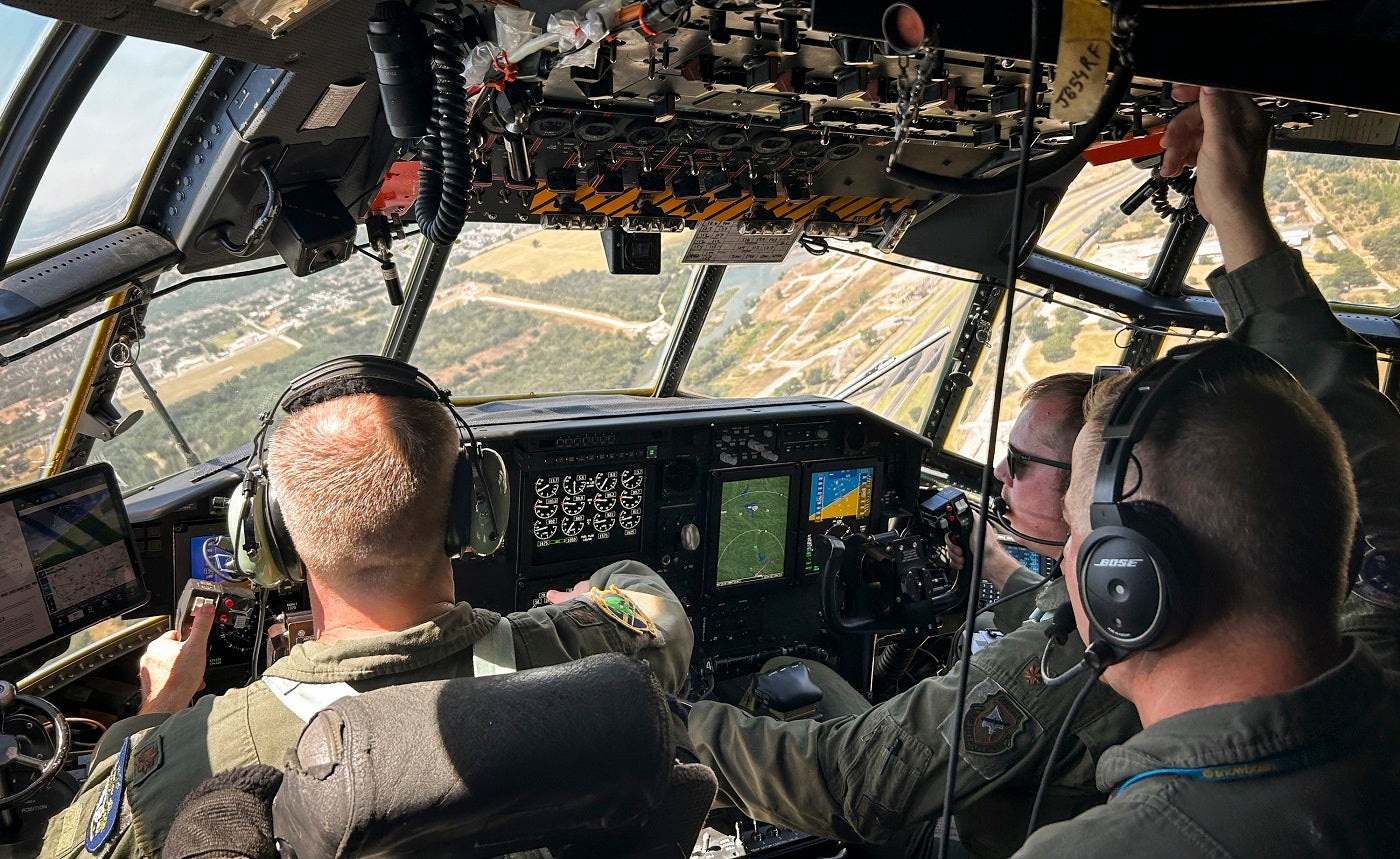
The US Air Force Reserve Command’s ageing C-130H Hercules fleet is transitioning from analogue to digital in a modernisation effort.
The Avionics Modernisation Programme Increment 2 (AMP Inc 2) will change the aircraft’s avionics and navigation systems, enhancing its capabilities for the modern battlefield.
The Air Force Reserve Command’s C-130H Hercules fleet, with a nearly six-year history, is on the cusp of a digital transformation. Testing has commenced on upgrading the aircraft’s avionics and navigation systems, known as the Avionics Modernisation Programme Increment 2. This overhaul is designed to propel the ageing aircraft into the digital age, aligning it with the requirements of the National Defense Strategy.
The global military avionics market is set to be valued at $21.3bn in 2022 and will grow at a compound annual growth rate of 3.2% to $29.1bn by 2032, according to GlobalData’s report, The Global Military Avionics Market Forecast 2022–2032.
The C-130’s interface evolution
The AMP Inc 2 modernisation effort introduces many upgrades including a new flight management system, autopilot, large glass multifunctional displays, digital engine instruments, and a terrain awareness and warning system. Notably, these enhancements aim to support mobility air forces in meeting their priorities under the National Defense Strategy.
For the past several years, the 417th Flight Test Squadron’s (FLTS) aircrews have played a role in the AMP upgrading process, culminating in the developmental testing of AMP Inc 2, which commenced in August. Maj. Jacob Duede, an experimental test pilot with the 417th FLTS, emphasised the significance of this upgrade, stating: “This modification completely changes the interface for the crew to employ the C-130H.”
Before AMP, aircrews had to print flight directions and manually input latitude and longitude coordinates. The new system streamlines this process, offering GPS navigation with a by-name search function and an autopilot, all integrated into the aircraft. As a result, pilots can modify flight plans swiftly, with the entire process taking less than 30 seconds.
Another addition to the aircraft is the Integrated Terrain Awareness and Warning System (ITAWS), which enhances ground and object avoidance capabilities. ITAWS, combined with flight navigational programmes, is now readily accessible on screens within the aircraft.
The modernisation efforts have also led to the replacement of analogue gauges with six multifunctional displays throughout the flight deck. These displays, brighter and more efficient, upgrade the aircraft’s cockpit area.
Operational testing and transition
The testing phase, spearheaded by the 417th FLTS, began in 2021 and is expected to continue throughout the year. This testing involves evaluating the newly installed systems, which are entirely new to the aircraft.
Upon the completion of developmental testing, the mission and aircraft transition to Little Rock, Arkansas, where the Air National Guard/AFRC Test Center will initiate the operational test phase.
In preparation for this next phase, AATC pilots have actively participated in DT flying missions alongside 417th FLTS aircrews. This hands-on experience will facilitate the development of new techniques, procedures and training standards for operational units.
Over the next five years, more than 23 Air Force Reserve and 54 Air National Guard C-130H aircraft are slated to undergo the AMP Inc 2 modification at an estimated cost of approximately $7m per aircraft.
In other C-130 international developments this year, New Zealand retired a C-130H Hercules aircraft following the New Zealand Government’s decision to purchase a fleet of five Lockheed Martin C-130J-30 Super Hercules. The Australian Government is set to make a multibillion-dollar investment by acquiring 20 new C-130J Hercules aircraft for the Royal Australian Air Force for $9.8bn.
Other notable countries to have the C-130H Hercules aircraft in their military fixed-wing inventory are Indonesia and Israel.
According to GlobalData’s The Global Military Avionics Market 2018-2028 report, Argentina is upgrading its C-130 transport aircraft with a modern avionics suite, while Mexico upgraded its C-130 with the Flight2 digital avionics suite.




